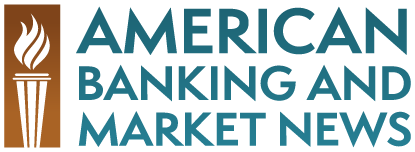 In many ways 2016 was a year that broke much of what we assumed about the world order. It started with the Chinese market nearly imploding then moved through the exuberance of the Trans-Pacific Partnership, which was soon put on life support, then came the Brexit vote and the Trump Election.
In many ways 2016 was a year that broke much of what we assumed about the world order. It started with the Chinese market nearly imploding then moved through the exuberance of the Trans-Pacific Partnership, which was soon put on life support, then came the Brexit vote and the Trump Election.
All told it was a tumultuous, yet profitable, year for global markets. 2017 is shaping up to be even more uncertain. What little detail now President Trump has given on his economic plans has been contradictory at best and in Europe, elections in France and Germany could determine whether the Euro, and possibly the European Union, will continue to exist in 2018.
However, there have been some bright spots on the global stage. This includes oil prices settling into the $50 to $50 per barrel range. At this range, OPEC can keep non-OPEC producers tantalizingly out of the market. In addition, the price stability has brought a measure of certainty back to Gulf Coast Countries. This includes the United Arab Emirates (UAE), which could be positioned for a breakout year in 2017.
In a large part this is due to the country’s ability to broaden the scope of the economy beyond oil. Granted, petroleum-based products still account for roughly 50 percent of the country’s GDP, but sectors such as finance, trading, real estate, technology, education, and tourism have helped the country to develop a more dynamic economy compared to its regional neighbors.
The UAE is located at the strategic crossroads of Europe, Africa, and Asia and several multinationals have set up their regional headquarters in the country. And it is not just Dubai or Abu Dhabi which have attracted large corporates.
Emirates such as Ras Al Khaimah have also attracted several large corporates. One example is Julphar Gulf Pharmaceutical Industries. The company is the largest manufacturer of generic drugs in the Middle East, North Africa (MENA) region and is headquarter Ras Al Khaimah.
This is a testament to leaders such as Sheikh Saud bin Saqr al Qasimi who has recognized the need to attract investment to his emirate. In turn, this has helped the entire UAE to become a more competitive attraction for all investors.
While geopolitical risks are always an issue in the Middle East it would also appear that the UAE is well insulated from potential disturbances. In fact, the government withstood the Arab Spring which swept up other countries, including Bahrain, and while ISIS has made inroad in other countries it has had limited success in the UAE.
This is not to discount potential political risks in the country, but to rather point out that the UAE appears to be better positioned compared to other countries in the region. If the country is able sustain this position, then it should translate into increased foreign direct investment – especially as companies look to expand their presence in the region.
As such, there are four trends which could play to the UAE’s favor in 2017, regardless of oil prices. The first trend is the reintegration of Iran into the global economy. While direct investment in Iran will be limited in the early stages, the UAE could act as the potential jumping off point. In addition, is growing development in Eastern Africa.
This includes growth in Tanzania and Kenya – much of which will directly benefit wholesale markets in the UAE. The third trend is the further expansion of financial markets in the emirates. This will include competition with Singapore for Indian family offices and rebalancing of bank operations in the face of uncertainty in Europe.
The last trend to watch in 2017, could be the potential for stability in parts of Iraq and possibly Syria. While both countries will continue to deal with the threat of ISIS, there is a slim chance that the U.S. and Russia might join forces to contain the threat. This would directly benefit the UAE as the country’s financial markets will serve as the key intermediary for transactions into and out of both countries.
There is no doubting that uncertain reigns supreme, several microeconomic factors point to a potential breakout year for the UAE. These include the strength of the banking system, the country’s increased role as a hub for the region, and growth potential of neighboring countries which will directly benefit the UAE.






